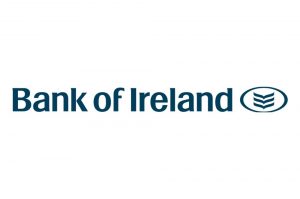
Let’s paint a picture. Your business appears to be going well overall. Revenue is good, new customers are flowing into the CRM system, you have won a number of local business awards and your company has grown in the last 2 years. All should be running smoothly but one nagging issue consistently pops up and won’t seem to disappear. The business never seems to have enough cash in the bank! Staff payments have been missed a number of times and debtors have been slow in paying by their due dates. It is a constant battle to keep actual cash coming in. Creditors are continually getting on to you as to why they haven’t been paid on time. How can this situation arise? How can it be that the business is prosperous yet you seem to be constantly under pressure? How is it that all of your hard work is being undermined by this one issue? The answer is poor cash flow management and it is an issue that effects more businesses than you think!
How Important is Cash Flow?
Cash Flow is one of the most critical success factors for small businesses. Many successful businesses have turned sour because the amount of cash coming in doesn’t compare with the amount of cash going out. Firms that don’t exercise good cash management may not be able to make the investments needed to compete or they may have to pay more to borrow money just to function. Cash is king for a reason as the adage goes. Cash Flow is the life blood of the business. Many companies don’t have a proper handle on their cash flow situation and as the economy turns from survival to expansion mode cash flow will become critical, as without it you will fall behind your competitors. Or to be more blunt, without good cash flow systems you cannot succeed! Many studies have found over the years that insufficient capital is one of the main reasons for small business failure, coupled with lack of experience, poor location, poor inventory management and over-investment in fixed assets

What is Cash Flow?
Cash Flow is essentially the movement of funds in and out of your business. You should be tracking this either weekly, monthly or quarterly. There are essentially two kinds of cash flows:
• Positive cash flow: This occurs when the cash funneling into your business from sales, accounts receivable, etc. is more than the amount of the cash leaving your businesses through accounts payable, monthly expenses, salaries, etc.
• Negative cash flow: This occurs when your outflow of cash is greater than your incoming cash. This generally spells trouble for a business but there are steps you can take to remedy the situation and generate/collect more cash while maintaining or cutting expenses.
Achieving a positive cash flow does just happen magically. You need to manage your cash flow to effectively control the inflow and outflow of cash. It is recommended you undertake a cash flow analysis to make sure you have enough cash each month to cover your obligations. Many accounting software packages designed for small businesses such as Quickbooks can help produce a cash flow statement.
Profit & Cash Flow. They are not the same thing!
You can’t just look at your profit and loss statement and get a grip on your cash flow. Many other financial figures feed into factoring your cash flow including: accounts receivable, inventory, accounts payable, capital expenditures and debt service. Cash flow management encompasses all of these factors. Knowing whether you earned a profit or loss is not the same as knowing what happened to your cash. Profit is simply revenue minus expenses. Invoicing a customer for products or services you sold to them creates revenue. Actually collecting the money on that invoice is what creates cash. A positive cash flow is actually needed to generate profits. You need enough cash to pay your employees and suppliers so that you can continue to operate your business. So you really need to structure your business to have a positive cash flow if you want your business to grow and increase profits.
Growing a business can put a huge strain on cash and financial resources. You almost always have to make investments and incur expenses upfront ahead of achieving the higher revenue and cash flow that comes with successful growth. Whether it’s expanding into new geographical areas by opening new offices or expanding virtually by updating your e-commerce website in order to sell to a wider customer base, cash up front is needed. It has to be found from somewhere!

How to Improve and Maintain Cash Flow?
Most business owners see growth as the solution to a cash flow problem. That’s why they often achieve their goal of growing the business only to find they have increased their cash flow problems in the process. Plan for growth and cash outlays in advance so they do not come as a surprise later on. Here are some practical steps to better manage cash flow for the growing business.
Collecting Receivables – Ask customers to send post dated checks for ongoing clients so that there is no time lag in collecting once work has been completed. Another method is to request that customers pay by bank transfer. Banking glitches aside it should be quicker than the time it takes to post, lodge and clear a cheque. Alternatively try offering discounts to customers if they pay bills quickly or offer some kind of incentive for early payment.
Tighten Credit Requirements – Businesses often have to extend credit to customers, particularly when starting out or growing. But you have to do your research beforehand to determine the risk of extending credit to each customer. Can they pay their bills on time? Is their business growing or faltering? Are they having cash-flow problems? You should also check references. Another option to extending credit is to accept credit cards. This will cost you a percentage usually 1 to 4 percent of the invoice but it may be a safer bet for getting paid on time.
Increase Sales – If you need more cash the obvious answer is to go out and try to attract new customers or sell additional goods/services to your existing customers. However this may be easier said than done. New customer acquisition is essential to a growing business but it can take time and money to convert prospects into sales. Selling more to existing customers is cheaper and may even lead to increased profit margins and generating more cash. However you need to be careful when increasing sales that you don’t just increase your accounts receivables and not actual cash if sales are on credit.
Pricing Discounts – One option to increasing cash flow is to offer your customers discounts if they pay early. While this may impact on your profit margin it may also help your management of cash flow by incentivising customers to make payments earlier than billing cycles typically require. Your company can also take advantage of this with suppliers and others that you owe but be careful that your early payments of debt don’t leave you with a cash flow shortfall.
Securing Loans – Short-term cash flow problems may sometimes necessitate a business taking out a loan from a financial institution. This could be in the form of an overdraft (or increased overdraft) or alternatively a short term loan. Most of the time this type of borrowing accomplishes its goals until the natural cash flow situation improves. Another option is a long-term amortised loan which includes interest and principal until the loan is paid off.
Getting a Handle on your Cash Flow!
Two questions to ask yourself in order to get a sense of your business’s cash flow problems are:
1. What is my cash balance right now?
2. What do I expect my cash balance to be six months from now?
If you can’t answer these questions then you don’t have your cash flow under control. You need to have your accounts updated regularly so that you know where the business is going and management accounts are an ideal way to give you a proactive look so that problems can be avoided rather than firefighting when they actually occur. In the modern business world there is no excuse for being in the dark as online systems and cloud applications allow you to access your financial information anytime, provided you keep it up to date. Track your cash flow results every month to determine if management is creating the type of cash flow your business needs. This also helps you get better and better at creating cash flow projections you can rely on as you make business decisions about expanding your business and taking care of your existing bills. If you take these steps you will save yourself endless stress and ongoing difficulties. If you don’t get used to the pain as the business will likely never fulfil its true potential.
Contact Avid Partner Today to see how we can assist you improve your Cash Flow Systems. Phone us on 01 4286900 or email us at advice@avidpartners.ie. We are here to help and have assisted many companies to date that find themselves in cash flow difficulties.












